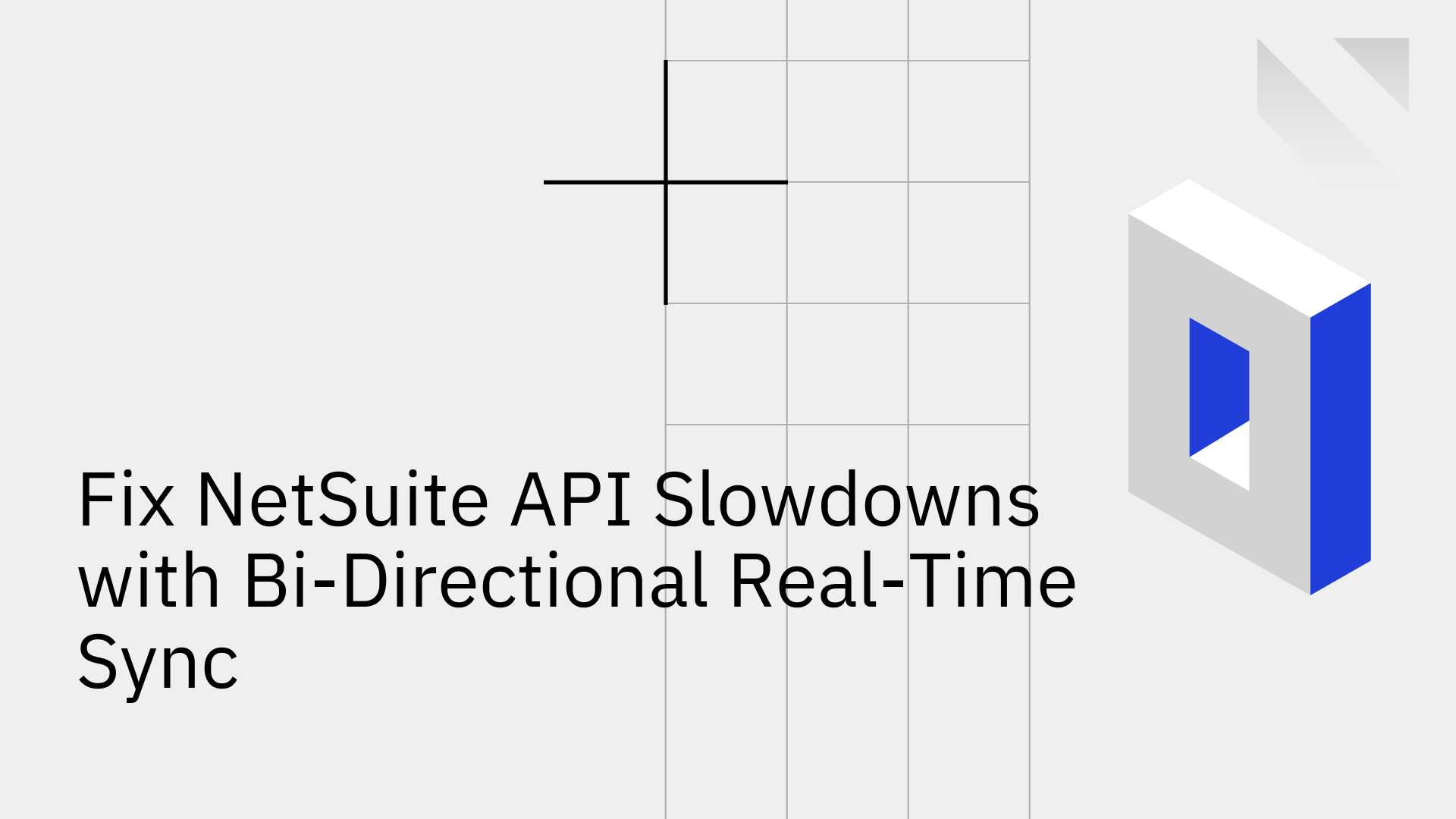
As a core Enterprise Resource Planning (ERP) system, NetSuite is the operational backbone for countless businesses. But when its data flow is choked, the entire business slows down. A common and deeply frustrating problem is experiencing NetSuite API slowdowns and delays, which stall operations, corrupt financial reporting, create inaccurate inventory levels, and lead to poor customer service.
While many companies try patching these issues with traditional integration methods, these often make the problem worse. The good news is that a modern solution bi-directional, real-time sync is designed to solve these API headaches permanently.
NetSuite API performance issues are not random glitches; they are symptoms of deeper problems with how your systems are connected and exchange data [1]. Understanding these root causes is the first step toward a permanent fix.
To protect its infrastructure, NetSuite enforces strict API rate and concurrency limits. If your business runs multiple integrations or attempts to sync large data batches, you can quickly hit these quotas. This results in throttled performance and API_RATE_LIMIT_EXCEEDED errors that stop your workflows cold [2]. For developers, constantly managing these constraints is a major headache. While learning how to fix NetSuite API rate limit errors fast is useful, a proactive approach is far more effective.
Traditional data integration relies on scheduled ETL (Extract, Transform, Load) jobs, which are a primary cause of slowdowns. Pulling large volumes of data consumes significant API resources and can lock up the system, delaying other critical operations. Many integrations also use inefficient practices, like making thousands of individual API calls instead of optimized batch calls, a practice even Oracle's own documentation advises against [3].
NetSuite is highly customizable, but this flexibility can come at a performance cost. Heavy customizations, complex workflows, and poorly written SuiteScripts can dramatically slow down NetSuite's responsiveness. Each API request might trigger this custom code, adding significant processing overhead and leading to slow response times. A thorough performance audit can often uncover these hidden bottlenecks [4].
Instead of applying temporary fixes to outdated integration methods, a fundamentally new approach is needed. Stacksync is an integration platform built specifically to overcome these challenges. Our solution is centered on bi-directional, real-time synchronization, which unlocks a seamless and instant flow of data between NetSuite and your other business-critical systems. This is the key to creating a truly connected and efficient enterprise. Explore our Netsuite two-way sync integration and workflow automation to see how it works.
Bi-directional, real-time sync is an event-driven approach. Instead of waiting for a scheduled batch job, it captures data changes as they happen and synchronizes them across all connected systems—like Salesforce, Shopify, or your databases in milliseconds. This is a stark contrast to scheduled syncs, which create data latency by design. With real-time sync, your data is always consistent across your entire tech stack, eliminating information silos. This modern approach is revolutionizing NetSuite data integration.
Stacksync is engineered to solve the core problems that cause NetSuite API delays. Here’s how our platform keeps your data moving fast:
Let's look at a common business process that often suffers from API delays: quote-to-cash.
The Problem: A salesperson closes a deal in Salesforce. This quote needs to become a sales order in NetSuite for fulfillment and invoicing. With a slow, batch-based integration, there's a delay. The sales team can't confirm the order status, and the finance team is working with outdated revenue data.
The Solution with Stacksync: With bi-directional, real-time sync, this entire workflow becomes instant and seamless.
This creates a frictionless workflow that eliminates delays and manual data entry. Our purpose-built Salesforce and NetSuite integration ensures complete data consistency. The same principle applies to other critical workflows, such as enabling real-time NetSuite Shopify integration to keep product and order data perfectly aligned.
NetSuite API slowdowns are a fundamental integration problem, not a server issue. Traditional methods like batch ETL are temporary fixes that don't scale and will continue to cause performance degradation.
Stacksync’s bi-directional, real-time synchronization is the definitive, future-proof solution for maintaining a fast and reliable NetSuite environment. Stop patching outdated integrations and empower your teams with data they can trust.
Book a demo with one of our cloud architects or start your 14-day free trial today.